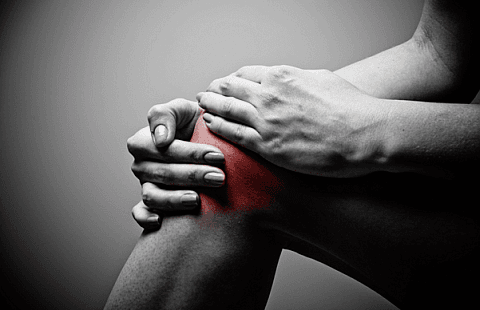Runners Knee and How to Prevent It

I vividly remember the time when I supported my friend at a marathon event. He is in the school varsity athletics team and is an avid runner. However during that particular marathon, he was not one of the frontrunners as he always was in each race he participated so far. An hour later, we saw him limp his way towards the finishing line, with his face contorted in pain. Upon finishing the race, he fell clutching his right knee and was immediately sent to the hospital for further checkups. Apparently, my friend was diagnosed with a very common problem that all runners face – Runner’s Knee.
What is Runner’s Knee?
Runner’s knee is the layman term used by doctors to name the medical condition called patellofemoral pain syndrome. (PFS) PFS is when you experience pain in the knee area. Your knees are put under a lot of pressure when you do activities like running, dancing or the time when you decided to do a spring cleaning of your house. When running, the constant bending and up and down movement of your knee can cause irritation, resulting in a sharp or dull pain experienced around your kneecap area. In some cases, one may hear the popping or cracking sound from your knee, or even feel the sensation of your knee giving way.
If left untreated, there is a high chance that your knee cartilage will be damaged, which will accelerate the development of arthritis.
How to Prevent Runner’s Knee
As the saying goes,” An ounce of prevention is worth a pound of cure.” Rather than recommending treatments, preventing the onset of Runner’s Knee is the best scenario. Here are a few general tips to ensure that your knees remain in tip top condition:
- Invest in Good Running Shoes
A good pair of running shoes is all you need really. Buy shoes that fit your feet, provide good gait and support and do not continue to exercise in worn out shoes. For runners with flat feet, it is a good idea to get shoe inserts or custom make your shoes so as to provide adequate support when you run.
- Run on soft and flat surfaces
Running on hard surfaces like concrete causes extra strain to your knees whereas running upwards and downwards on a hilly terrain results in excessive knee bending. Run on soft and flat surfaces such as grass and synthetic tracks. If you have to run on hilly terrains, run in a zigzag manner rather than a straight line as this reduces the tension on your kneecap.
- Always Warm Up Before Running
Do not start running immediately. Allow your knees to get used to the motion by brisk walking for a few minutes before you begin your run.
- Stretch Before and After a Run
To prevent Runner’s Knee, you have to strengthen and stretch the muscles that are in charge of knee movements. Focus on exercises that help to stretch your calves, hamstrings and quadriceps. Keeping those leg muscles strong and flexible will aid in the support of the knee.
- Do Not Suddenly Increase the Intensity of your Runs
If you are used to running 5km a day, do not immediately increase it to 10km. Doing this may harm your knees. Instead, slowly increase your running distance so that your knees will get used to the pressure.
- Be at a Healthy and Acceptable Weight
When obese, your knees are put under more strain and pressure due to having to support and carry more weight with each step you take. By keeping yourself in good shape, you will lessen the burden on your knees and reduce the chance of pain in your knees.










